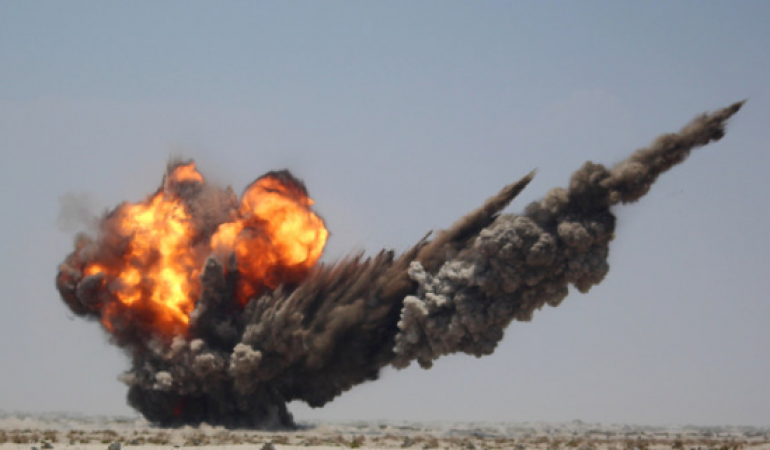
Al Mukalla: In the northern province of Saada, two Yemeni demining workers were killed while attempting to disarm landmines that had been stacked there by the Houthis, who are supported by Iran.
The workers were working as a team in the government-controlled Al-Bouqa area when two anti-tank mines stacked on top of each other exploded as they attempted to defuse them, according to the Yemeni Landmine Records, a group that tracks casualties.
The group asserted that the Houthis deliberately tried to kill deminers by laying explosives with motion detectors, planting devices that could not be found using conventional methods, and clustering landmines in one area.
Also Read: Biden arrives in the UK prior to the NATO summit
Yemen is the most mined region in the world since World War II, according to Yemeni authorities and the Saudi-funded Masam demining programme, which estimates that the Houthis have planted more than 1 million landmines and IEDs there over the past ten years.
According to the monitoring organisation, landmine explosions have claimed the lives of at least eight civilians in Taiz and Hodeidah this month.
In the Al-Jahmelia district of Taiz, not far from his home, Hamza Ahmed, 14, was killed while tampering with an IED dressed as a soda can.
Arfat Abdu Ghalebm, 13, lost his life in a separate incident when a mortar shell he was playing with exploded while he was tending sheep outside of Taiz.
Also Read: Zelensky eyes ‘best possible result’ from NATO summit
"We urge parents to educate their children and warn them against touching suspicious objects in order to save their children's lives," a spokesperson for the monitoring group said.
The managing director of the Masam project, Ousama Al-Gosaibi, criticised the international community and UN organisations for not doing enough to confront the Houthis about the problem.
According to him, project teams have defused 405,818 landlines, unexploded ordnances, and IEDs spread over 47,485,089 square metres of Yemeni soil over the past five years, killing 33 Masam deminers and injuring 52 others in landmine explosions since 2018.
Al-Gosaibi stated that the international community's silence on the crimes against humanity committed by the Houthi militia, which infringes on the rights of civilians by indiscriminately using mines, is "unfortunate and irresponsible."
The Houthis have continued to plant more advanced landmines, including in areas cleared by the Saudi project, despite the fact that hostilities in Yemen have significantly decreased since a UN-brokered truce went into effect in April of last year.
"Unfortunately, the minefield remains in place. In fact, there are a lot of places that Masam's teams had previously cleared, but that have since undergone more dangerous re-mining.
"The Houthis are constantly working to improve their mines and explosive devices and equip them with new technologies," he continued. "Tricks and techniques used in the production of mines and explosive devices are constantly evolving.
According to Al-Gosaibi, there are Houthi landmines in 18 of the province of Taiz's 23 districts, making Taiz the second-most heavily mined province in Yemen after Hodeidah in the west.